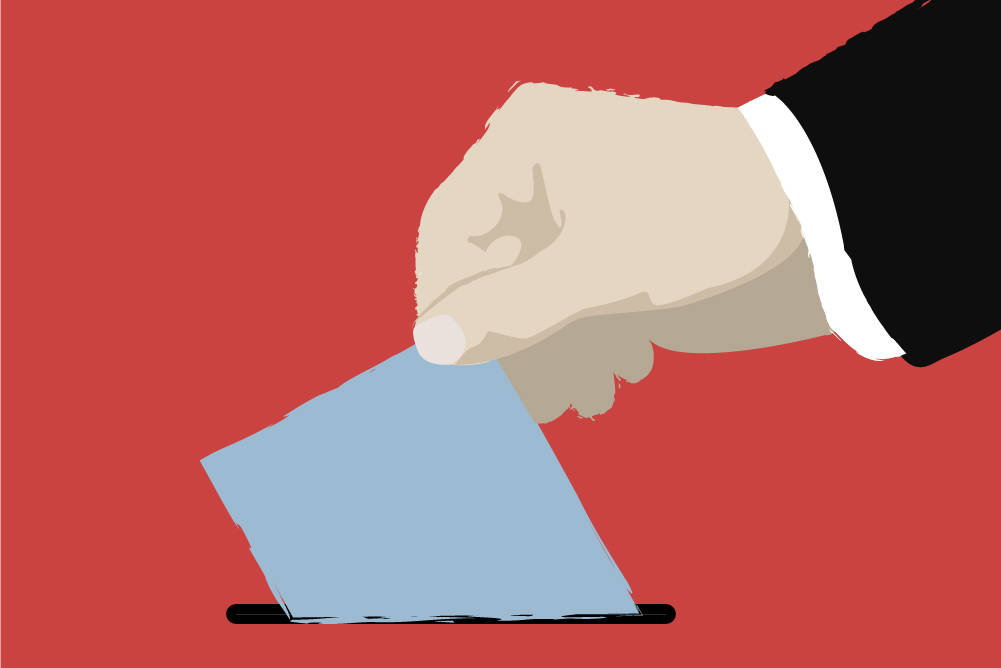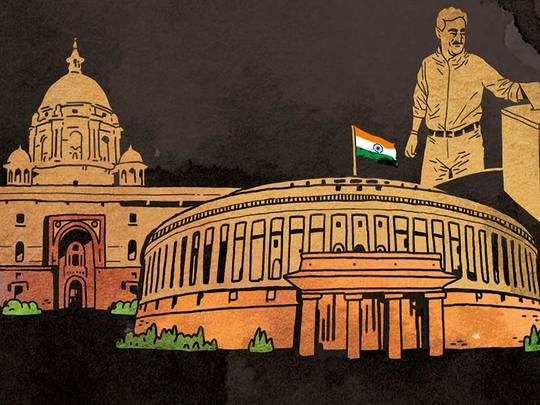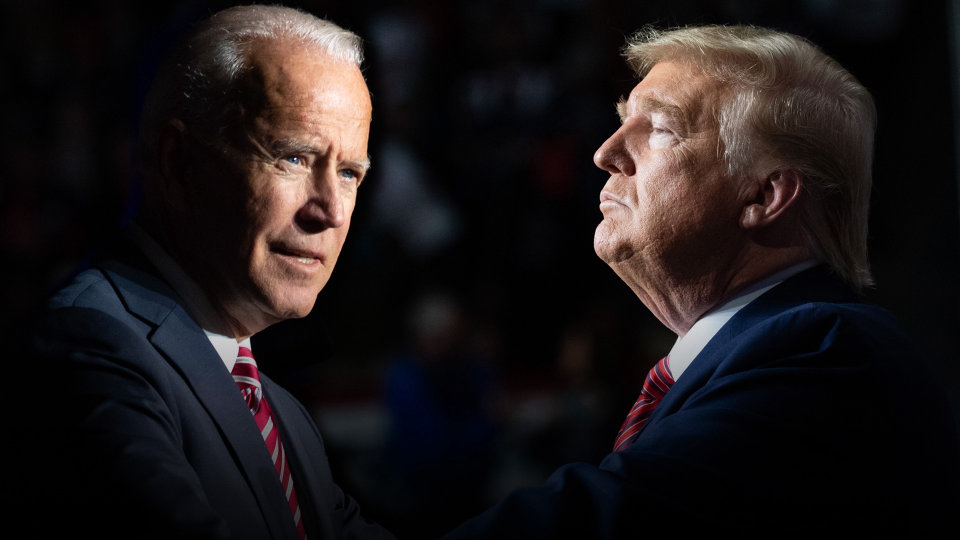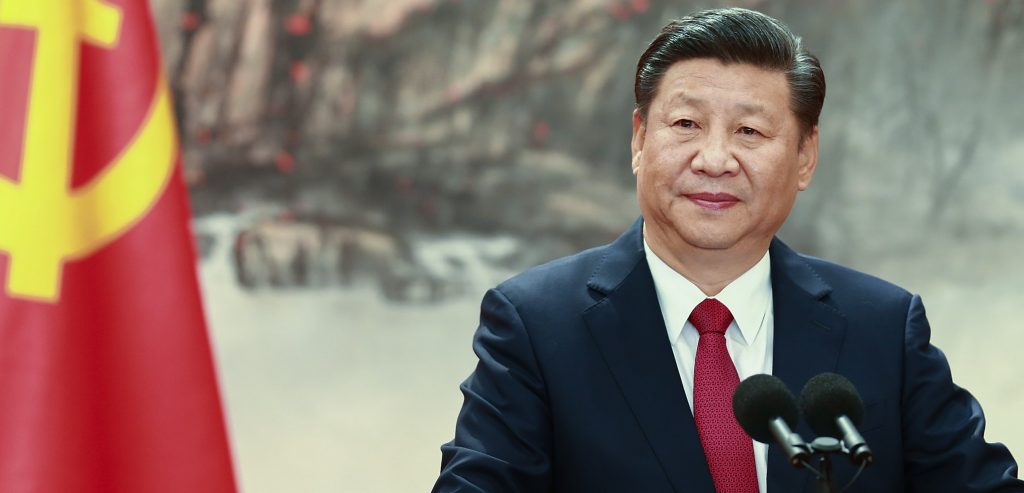
The Electoral System or Voting System is the way by which the general public selects their Representatives. The Electoral System or System of Voting is a set of rules and regulations that decide how elections and referendums are directed and being conducted and how their results are determined. Electoral System of Politics is mostly organized by the different governments of different nations, while non-political elections may take place in business, non-profit organizations, and also informal organizations.
These principles and rules administer all aspects of the process of voting; when an election will take place, who is permitted to cast a vote, who can stand in elections as a candidate, limits on spending on political campaigns, and different components that can influence the result. Political Electoral System is characterized by the Constitution and electoral laws, is ordinarily conducted by Election Commissions, and can utilize different types of elections for different offices.
India is maybe one of the most diverse nations of the world, in any way be it geographical – deserts, mountains, forests, islands, or in being multi-religion, multi-cultural, multi-lingual, multi-ethnic. There’s a need to satisfy the needs of this diversity. There’s an obligation on the Election Commission to conduct free, reasonable, transparent, and peaceful elections, guaranteeing inclusiveness and participation.
The administration of elections in India is persistently developing. From separate polling booths for every candidate to the marking framework to EVMs (electronic voting machines), it has been a long journey. EVMs are simple, friendly, and cost-effective and give quicker and error-free voting and counting and have been a distinct advantage.
Different types of systems of voting have different features which can range from how proportional they are whether seats in parliament reflect votes cast, the connection between MPs and their communities, and the extension to which voters can elect between the different candidates standing in elections. And different countries use different electoral systems.
Electoral Systems
Plurality System
Nations using first-past-the-post for lawmaking bodies are also known as legislatures. Plurality voting is a framework wherein the candidates with the most number of votes wins, with no necessity to get a majority of votes. In situations where there is a single position to be filled, it is known as first-past-the-post; this is the second most common electoral system for national legislatures, with 58 nations utilizing it to choose their governing bodies.
In situations where there are several positions to be filled, most commonly in cases of multi-member constituencies, plurality voting is referred to as block voting, different non-transferable vote, or plurality at-large. This takes two principle structures: in one structure, voters have the same number of votes and can vote for any candidate regardless of party. There are minor variations from this framework, for example, limited voting, where voters are given fewer votes than the number of seats to be filled.
Majoritarian System
Majoritarian voting is a framework wherein candidates need to get a majority number of the votes to be elected, sometimes just a majority is needed in the last round of counting if no candidate can accomplish a majority. There are two principal types of majoritarian frameworks, one is utilizing a single round of ranked voting, and the other utilizing at least two rounds. Both are utilized for single-member constituencies.
Majoritarian voting can happen in a single round utilizing Instant Runoff Voting (IRV), whereby voters rank candidates in order of their preferences; this framework or system is utilized for parliamentary elections in Australia.
Proportional Representation is the most widely utilized electoral system for national legislatures, with the parliaments of more than eighty nations elected by different types of the system.
Party-list proportional representation is the single most common electoral framework and is utilized by 80 nations, and includes voters voting for a list of candidates who are proposed by a party. In closed list frameworks, voters don’t have any impact over the candidates whose name is forwarded by the party, however, in open list frameworks, voters can both vote in favour of the party list and impact the order wherein candidates will be assigned seats.
There are a few distinct approaches to assign seats in a proportional system or framework. There are two principal sorts of the framework: the highest average and largest remainder. The highest average system includes separating the votes got by each party by a series of divisors and producing figures that decide seat allocation or distribution of seats.
Single Transferable Vote (STV) is another type of proportional representation. In STV, voters rank candidates in a multi-member constituency as opposed to deciding in favour of a party-list. It is utilized in Malta and the Republic of Ireland. To be elected, the candidates must pass a quota, must pass a share (the Droop quota being the most widely recognized). Candidates that pass the quota on the first round of counting are elected. Votes are then reallocated from the least successful candidates, just as surplus votes from successful candidates until the total of seats have been filled by candidates who have passed the quota.
The other fundamental type of majoritarian system is the two-round system, which is the most well-known system utilized for elections of the president around the globe, being utilized in 88 nations.
In any situation, the event that no competitor accomplishes a majority number of votes in the first round of voting, a second round is held to decide the winner. The second round is restricted to the top 2 candidates from the first round. In certain elections, more than 2 candidates may decide to challenge the second round; in these cases, the second round is chosen by plurality voting.
Mixed System
In a few nations, mixed systems are utilized to choose the legislature. These incorporate parallel voting and mixed-member proportional representation.
There are two techniques by which individuals from a governing body are elected; some part of the membership gets elected by a plurality or majority vote in single-member constituencies and the other part by proportional representation. The result of the constituency vote has no impact on the result of the proportional vote.
Mixed Member Proportional Representation system is being used in eight nations all around the globe, additionally observes the membership of the legislature elected by constituency and proportional methods. This may result in overhang seats, where parties win a greater number of seats in the constituency system than they would be qualified to based on their vote share. There are different varieties which incorporate the Additional Member System and Alternative Vote Plus, where voters cast votes for both single-member constituency and multi-member constituencies; the seats allocation seats in the multi-member constituencies is adjusted to accomplish an overall seat total proportion to parties’ vote share by considering the number of seats won by parties in the single-member constituencies.
Electoral System in major world Democracies
India
The President of India is the executive head of India and he is also the supreme commander in chief for all defence forces in India. And it is the Prime Minister of India, who is the head of the party or alliance having a majority in National Elections to Lok Sabha.
Election Commission is a central body, instituted under the provisions of the Constitution of India, which is responsible for monitoring and regulating all the procedures of the electoral of India.
Elections Commission guarantees the conduct of an individual’s pre-elections, during elections, and post elections according to the legal enactment.
Members of the lower house of Parliament which is also called as Lok Sabha (House of the People) are elected by being voted by all adult residents of India, from a lot of candidates who stand in their particular constituency. . Candidates who win the election of Lok Sabha are called members of parliament and hold their seats for 5 years or until the body is dissolved by the President on the advice of the council of ministers. After 5 years, the elections are conducted to elect 545 members for Lok Sabha.

Members of the State Legislative Assembly, are elected by direct elections voting, from a set of candidates. Candidates who secure the most numbers of votes and win the elections of State Legislative Assemblies are called Members of Legislative Assembly (MLA) and hold their seats for 5 years or until the body is dissolved by the Governor.
The total strength of each assembly relies upon each state, generally dependent on size and population.
When a candidate who has been elected to either the upper house or lower house of parliament leaves the office vacant before their term gets over, a by-election is being conducted to find a replacement to fill the vacant place. It is also called as by-polls. The office can get vacated by the death of any of the elected candidates.
The Rajya Sabha, which is also called the council of states, is the upper house of parliament of India. Candidates are not elected directly by a resident of India but they are elected by the Members of Legislative Assemblies and up to 12 can be nominated by the President of India. The tenure of members of Rajya Sabha is 6 years with 33 percent facing re-elections every 2 years. Rajya Sabha acts as 2nd level review body before a bill turns into an act.
The Vice President of India is the ex-officio Chairman of the Upper House of parliament who presides over its meetings.
Election Procedure
Candidates are needed to file their nomination papers with the Electoral Commission. A list of candidates is published. No party is permitted to utilize government resources for campaigning. No party is permitted to bribe the candidates before elections. The government can’t begin a project during the election period. Campaigning closes by 6:00 pm two days before the polling day of the Elections.
The time for polling is held between 7:00 am and 6:00 pm. The Collector of each district is responsible for polling. Government representatives are utilized as poll officers at the polling stations. Electronic Voting Machines (EVM) are being utilized rather than polling stations to prevent election fraud. This practice was being founded in 1962.
United States of America
Plurality system is used to choose the U.S. House Representatives, just as many state and local governing bodies. It is the most widely recognized and most popular constituent framework at present being used in America. Under the plurality framework, a zone is separated into various geographically characterized voting districts, each represented by a single elected official. Citizens cast a single vote for their representation of a district with the highest number of votes received even if he or she hasn’t received less than half of the vote.
Winners take all is the standard in American jurisdiction and is, as of now, utilized for all national and state elections.

Elections in the United States are held for government authorities at the central, state, and local levels. At the central level, the country’s head of state, the President, is chosen indirectly by the individuals of each state, through an Electoral College. Today, these voters quite often vote with the well-known vote of their state. All individuals from the central legislature, the Congress, are legitimately chosen by the individuals of each state. Some elected offices are at the state level, and each state having an elective governor and legislature. There are elected offices at the local level, in areas, urban communities, towns, townships, and villages; just as for special districts and school districts which may transcend country and municipal limits.
The most widely recognized strategy utilized in U.S. decisions is the first-past-the-post framework, where the candidate who gets the most votes wins the election. Under this framework, an up-and-comer just requires the majority of votes as opposed to the majority.
Australia
The Electoral system of Australia comprises of the laws and processes which are being used for the election of members of the Parliament of Australia. The system currently has different characteristics which include compulsory enrollment, compulsory voting, majority-preferential instant-runoff voting in single-member seats to elect the lower house and the House of Representatives, and the utilization of the single transferable vote and proportional representation system to elect the upper house that is called the Senate.
The Election timing is being governed by the Constitution and political conventions. Generally, elections are held after every three years and are being conducted or organized by the Independent Australian Electoral Commission (AEC).
China
All residents of China who have completed the age of 18 have the right to cast a vote and stand for elections, regardless of any personal background. Individuals who have been denied their political rights as per law don’t reserve the right to cast a vote and stand for elections. One voter has just one vote in every election.
Every political party and mass associations may either mutually or independently prescribe candidates to be deputies. Candidates should be suggested by a minimum of 10 voters indirect elections and 10 deputies in indirect elections.

In both, indirect and direct elections, the number of competitors must surpass the number of representatives to be elected and the elections must be competitive. While Indirect election, the number of candidates ought to surpass the number to be elected by 33% to 100%. In an indirect election, the number of candidates ought to surpass the number to be elected by 20% to half.
Candidates who get the majority of the citizens are elected. In an indirect method of election, candidates who receive the votes of the majority of the deputies casting a vote are elected. The expenses of the election are paid out of the state treasury.
South Korea
The Elections in South Korea are being held on a national level to choose the President and the National Assembly. The Elections of local areas are held every 4 years to elect the governors, metropolitan mayors, mayors of municipal, and provincial and Municipal lawmaking bodies.
Since the legislative elections of 2020, South Korea follows a multi-party system, the centre left-liberal Democratic Party of Korea and the right-wing conservative United Future Party. There are two remarkable minor parties: the liberal-conservative centrist Minsaeng Party and the reformist Justice Party.
Polling stations are typically situated in schools. During the non-attendant or early voting period, voters can cast a vote at any place of polling in the nation. On the day of the election, voters may just cast a vote at polling stations in their registered constituency. Korean voters mark paper ballots with a rubber stamp in red ink.
Conclusion
The democratic system implies government by the individuals. In theory, the election of representative policymakers ought to methodically prompt them to take account of what people want and what individuals need. If a nation has no election, for example, Saudi Arabia, or no election at the national level, as in China, we don’t believe the nation to be a democratic system, anyway significant it might be or whatever different ethics it might have holding intermittent free and fair elections by guaranteeing that they issue code and conduct to the parties and the candidates who are standing or involving in any work in the election. The commission can eliminate any candidate if he/she violates the set of principles.